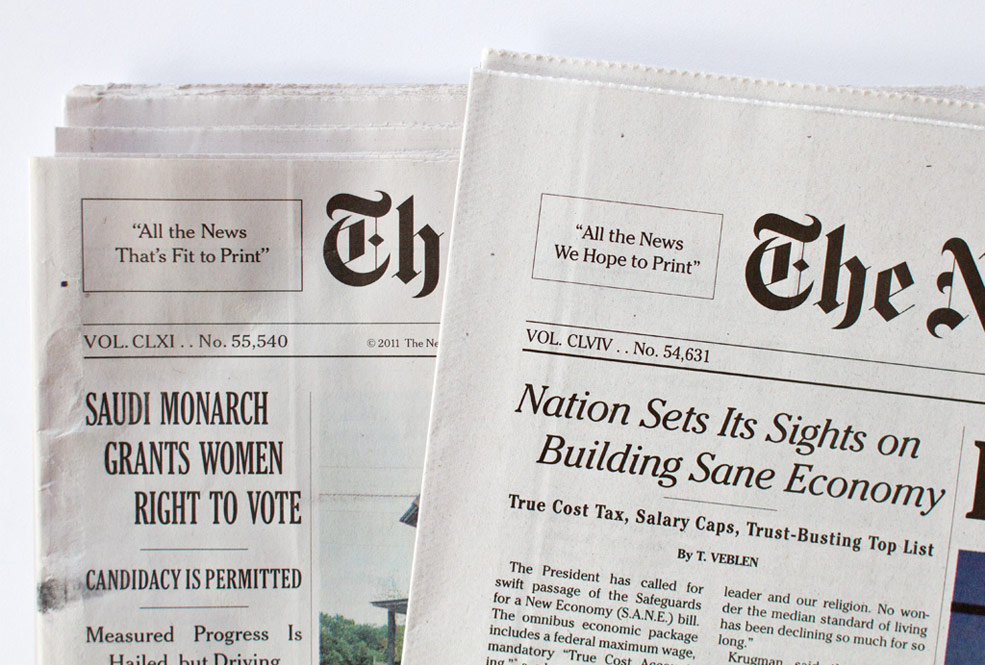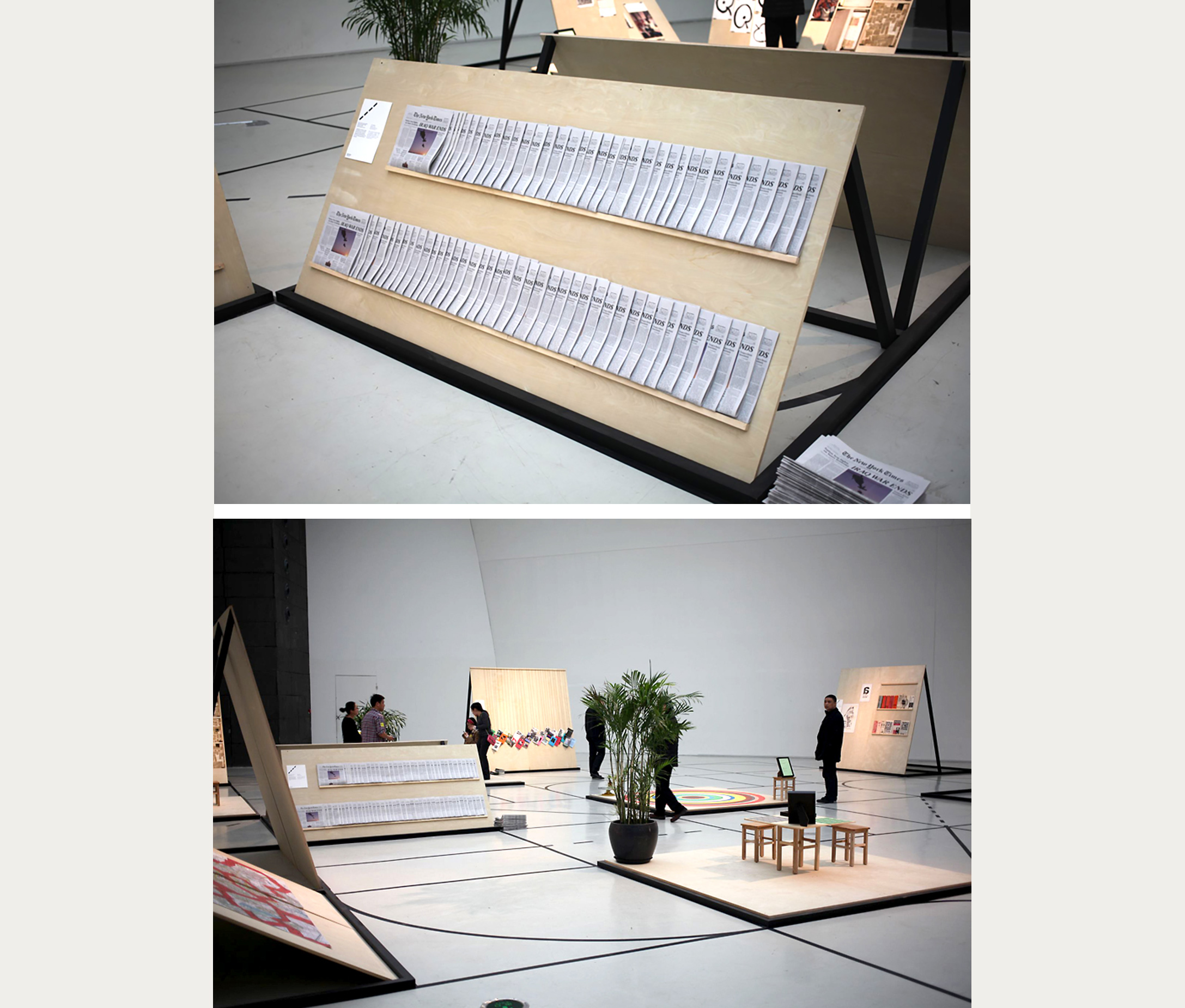
10
Utopian New York Times
…or the day my friends and I ended the Iraq war (in increments of 30 seconds).
This project brought together dozens of activists in a collaborative vision of what could be possible (or juuuust on the edge of possible). Initiated by the Yes Men and crafted in my apartment, 100,000 copies of a perfectly counterfeited New York Times were distributed—providently postdated to describe a utopian future. Intended to catch bleary-eyed commuters off guard, it offered commuters a virtual reality simulation of an alternate reality, written in the familiar language of the daily news and printed onto paper. (It is, after all, much harder to argue “reality” with something physical in your hands.)


The paper provided a blueprint for a better world, but in each article, that better world was attained through popular pressure (history tells us that this is the only way change is made). As people’s initial excitement shifted to “well… why not?” it sparked an international conversation on democracy. (Why shouldn’t the people get what we want want in a democracy?) Protest normally presents grievances. By flipping it and offering a positive vision, we ruptured complacency in the present and vividly revealed a better world, a technique still used in organizing today.
For this project, we won the Ars Electronica Prix and the newspaper has been exhibited in museums on four continents. In his 2019 book Post-Digital Print: The Mutation of Publishing since 1894, Alessandro Ludovico referred to our paper as “one of the most significant alternative projects of the new millennium.”


"…viscerally intelligent, passionately committed, seamlessly perpetrated poetic terrorism of the highest order." —ARTCAL
